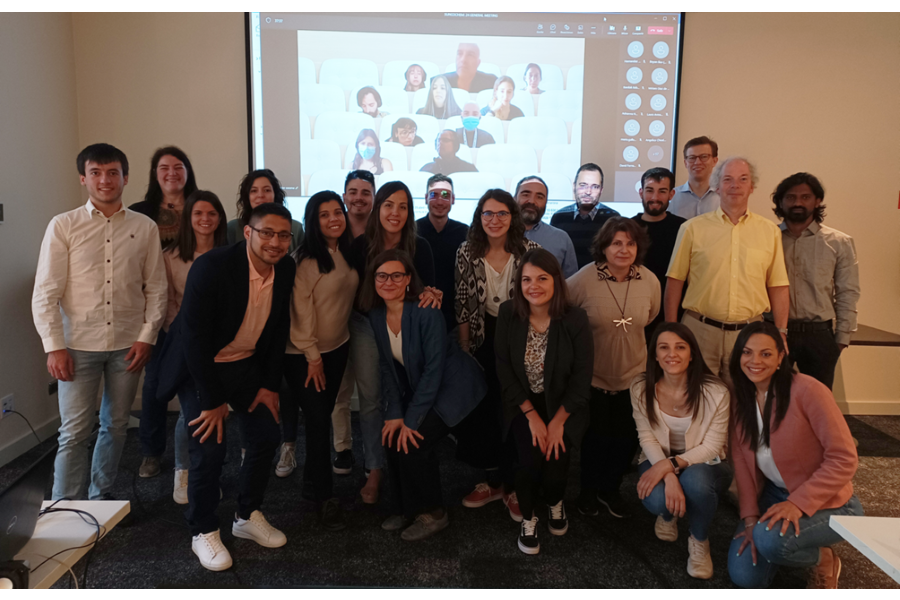
- 03/05/2022
- NEWS
SUNCOCHEM e CATCO2NVERS: CO2 valorization, from research to industrialization
SUNCOCHEM
The 24M general assembly of the SUNCOCHEM project (EU H2020) was held in Barcelona last April 27-28. During the meeting the main progresses were discussed: the results of CO2 conversion in oxoproducts are promising and the first TRL3 prototypes developed by HYSYTECH were presented and will be tested in the following months.
In the following period of the project, HYSYTECH will gather information from the TRL3 experimental campaign to design the TRL4 prototype to be integrated with the solar panels for autonomous operation, without electricity from the grid.
The self-biased
photo-electrochemical reactor prototype will be used to convert
three different important chemical precursors (limonene, butene e
formaldehyde) into high-added value products (LimoxalTM, Valeraldehyde e
glycolic acid), using waste CO2 from industrial flue gases and solar
energy sources.
LimoxalTM is a fragrance ingredient produced by the project partner IFF, Valeraldehyde is a flavor ingredient produced by the project partner DOW, instead glycolic acid, a large used building block in the chemical industry, is of interest of the project partner Avantium and will be used for several applications like dying and tanning (textile), flavoring agent (food) and emulsion additive.
CATCO2NVERS
Last 19-20 April HYSYTECH took part in the M12 meeting of the CATCO2NVERS project (EU H2020) at the University of Twente, in which the progresses in the development of CO2 valorization processes were discussed.
HYSYTECH is preparing the development and manufacturing of novel process units and technologies, to fill the gap between basic research and innovative process industrialization.
CATCO2NVERS is an ambitious project that combines research areas such as electrochemistry, biotechnology and thermocatalysis and will contribute to reduce GHG emissions from the bio-based industries developing five innovative and integrated technologies, based on three catalytic methods (electrochemical, enzymatic, thermochemical). It will transform waste-CO2 and residual biomass from two bio-based industries into added-value chemicals: glyoxylic acid, lactic acid, furan dicarboxylic methyl ester (FDME) and cyclic carbonated fatty acid methyl esters (CCFAMEs). These products will be validated in cosmetics formulations, as building blocks for polymers and green solvents.


